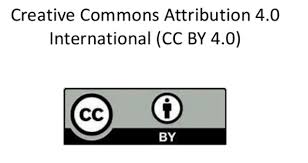Effects of nitrogenous fertilizers on rice yield under continuous flooding and alternate wetting and drying conditions
DOI:
https://doi.org/10.47440/JAFE.2021.2306Keywords:
Alternate wetting and drying, Continuous flooding, Urea super granule, Prilled ureaAbstract
In rice cultivation, water and nitrogen saving strategies are becoming more crucial in order to identify efficient and useful crop production and management approaches. A study was conducted at the Soil Science Field Laboratory of Bangladesh Agricultural University, Mymensingh to examine the combined effects of irrigation method and nitrogen fertilizer on yield contributing traits and yield of rice cv. BRRI dhan29. The experiment was set up in a split-plot based on a randomized complete block design with 3 replications and 14 treatment combinations. Two irrigation methods such as continuous flooding (CF) and alternate wetting and drying (AWD) were the main factor while nitrogen fertilizers including prilled urea (PU) and urea super granule (USG) were the sub-factor. The treatment T6 (USG at 7 DAT) generated the highest plant height (cm), no. of effective tillers hill-1, panicle length (cm), no. of grains panicle-1, grain yield and biological yield during AWD condition. In terms of grain yield, the treatment combinations AWD + T6 and CF + T7 were statistically equal. In comparison to control, all AWD + USG and CF + PU treatment combinations increased straw yield and harvest index. Under both AWD and CF conditions, USG increased more grain and straw yields compared to PU. So, farmers may be advised to apply USG (216 kg ha-1) at 7 DAT under AWD conditions in order to improve rice yield and ensure food security.






 Publisher:
Publisher: 